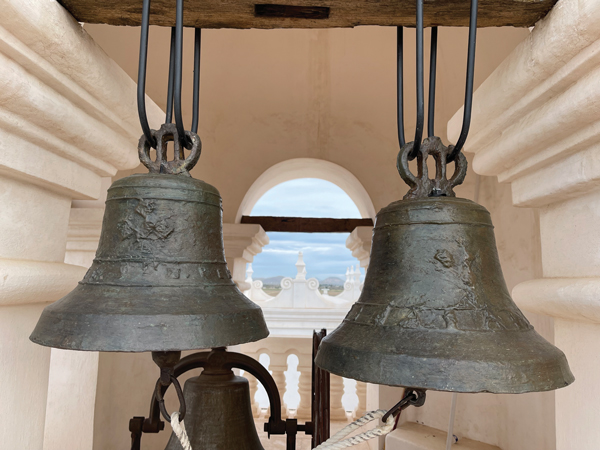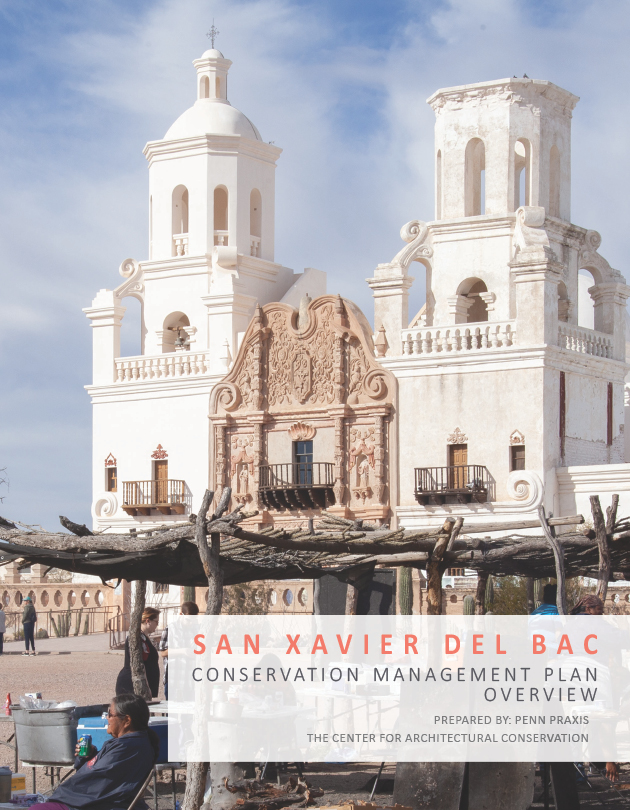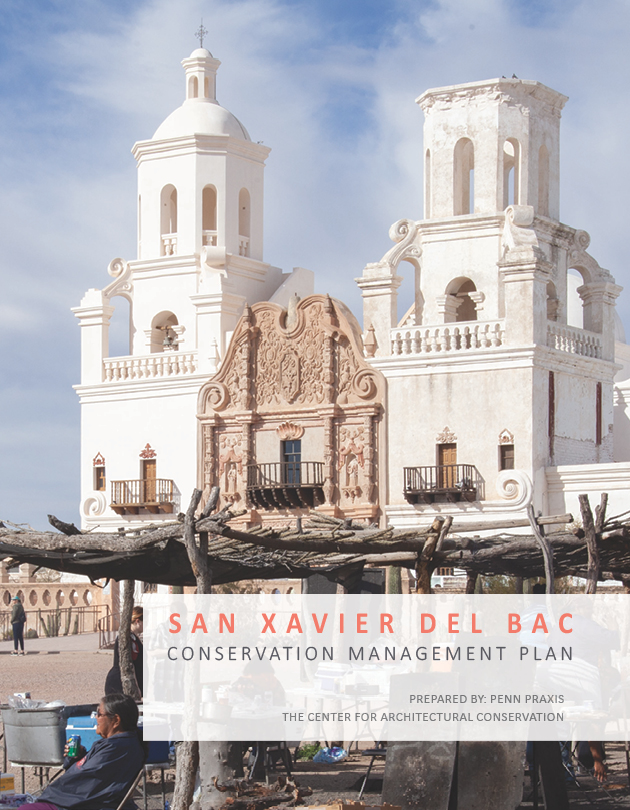Conservation | Preservation
Widely regarded as the premier example of Spanish Colonial architecture, Mission San Xavier del Bac is the only church of its kind within the U.S. that is largely intact in its original form. Further, it is a working church still offering spiritual support to members of the indigenous population whose ancestors helped build the church.
During the more than 200-year history of the Mission, non-compatible materials were used at times in repairs. Since 1989, Patronato San Xavier has reversed this trend, returning to the use of traditional materials in the Mission’s preservation.
Conservation and preservation of the exterior of Mission San Xavier not only preserves the building as a work of architecture and sculpture, but also protects and preserves the original 18th Century mural paintings and statuary of the interior.
The Mission’s interior artwork is both literally and figuratively sacred: each speck of the original paint or plaster is irreplaceable, and great effort is expended in conserving every square centimeter.
Conservation Management Plan
The compilation of this plan was possible thanks to the thoughtful input, research, and documentation of many who have cared for San Xavier del Bac over the past decades, and centuries. The contributors to this project are many. A full copy or overview of the Conservation Management Plan can be viewed from the links in this section.
Prepared By: Penn Praxis, The Center for Architectural Conservation
Project Director: Frank G. Matero
Project Manager: Starr Herr-Cardillo
Research Associates: Dorcas Corchado & Caroline Dickensheets
Conservation Management Plan Overview
PDF (9.72MB)
Conservation Managment Plan
PDF (44MB)
By contrast, the exterior of the building functions like a skin, protecting the interior from the elements: rain and hail, heat and dust, cycles of freezing and thawing (Tucson, at 2,500 feet is above the frost line). As with human skin, the plaster finish of the exterior, including surface walls and vaults, must breathe and permit movement. The historic structure is a living, breathing organism and so requires constant attention and maintenance.
Exterior conservation and preservation of the Mission follows guidelines set by the United States Secretary of the Interior, with regular consultation with the Arizona State Historic Preservation Office.
Original features are repaired where possible, rather than replaced. Where the original material has deteriorated beyond repair – a point that has a different definition for each material – the deteriorated element is replicated using authentic and compatible materials, based on documentary evidence.
The work accomplished as a part of San Xavier’s conservation and preservation is carefully documented so that future generations will know exactly what was done and how.
In 1992, the Patronato hired Guggenheim conservator Paul Schwartzbaum who put together a team of international art conservators to preserve and clean the church interior. The team spent six seasons conserving the wall paintings and sculpture throughout the church interior.
Since 2002, Tim Lewis, a member of Tohono O’odham community of Wa:k, and his wife Matilde Rubio (both of whom had roles on the Schwartzbaum team) have continued the work to preserve the Mission’s priceless interior.
In 2016, young apprentices from the Nation began training as conservators at Mission San Xavier thanks to generous grant funding for a multi-year program from the Tohono O’odham Nation and the Marshall Foundation.
Timeline
1985: Patronato commissions Gloria Giffords, an art conservator from Tucson, and Miguel Celorio, a historian from the University of the Americas in Puebla, Mexico, to survey the condition of the interior art and create a plan to clean and conserve it.
1989 – 1990: Because of extensive water penetration into the church, Patronato requested the removal of elastomeric roof coating and two layers of cement plaster from roof vaults and domes, the Sacristy and the Chapter Room. The cement was replaced with the traditional finish of three coats of lime, sand and nopal plaster.
1990 – 1991: Repair the exterior and refinish with lime plaster the East Transept in advance of arrival of interior art restoration team.
Spring 1992: Restoration of art in the interior of East Transept by the European team of conservators assembled by Paul Schwartzbaum of the New York-based Guggenheim Institute.
1992 – 1993: Repair and refinish exterior of the West Transept in advance of arrival of interior art restoration team.
Spring 1993: Restoration of interior art of West Transept by Schwartzbaum team.
1993 – 1994: East wall of Nave — Repair and refinish exterior of the east wall of the Nave advance of arrival of interior art restoration team.
Spring 1994: Restoration of art in the interior of Nave and Choir Loft by Schwartzbaum team.
1994 – 1995: Repair and refinish exterior walls Apse/High Altar (Retablo Mayor). Refinish vault at the West Transept.
Spring 1995: Restoration of art in the interior of cupola by Schwartzbaum team.
1995 – 1996: Exterior repair and refinishing of the parapets.
Spring 1996: Restoration of lower half of Retablo Mayor by Schwartzbaum team.
1996 – 1997: Refinish vaults of Nave and Choir Loft.
Spring 1997: Restoration of upper half of Retablo Mayor by Schwartzbaum team.
1998 – 1999: Continue exterior preservation; install updated and complete lightning protection system.
2000 – 2001: Refinish West Wall of Nave; remove 25 cast concrete finials around parapet and replace with lightweight, fiberglass replicas.
2002 – 2003: Repair and refinish parapets at perimeters of roof.
2003 – 2008: Repair and refinish West Tower, from foundations to lantern.
2009 – 2013: Repair and refinish Sacristy Arcade and East Wall of Chapter Room, Transept and Sacristy.
2014 – 2016: Conservation team revisits the main altar (the Retable Mayor).
2018: Conservation team works on conservation of the original altar railings
2014 – 2022: The East Tower completed
Phase 2014 – 2018: Work on the foundations and the interior sections of the ground floor and the Chapter Room.
Phase 2021 – 2022: Repair of exterior sections of the tower.
2019: Conservators conduct repair work in the Choir Loft
2019 – 2020: Conservation of the first set of original doors
2020: First ever conservation of the bells at the Mission begins
2020 – 2022: Conservators complete repair work in the West Transept.
2021: Conservation planning for the Façade begins. The formal project will launch fall of 2022.
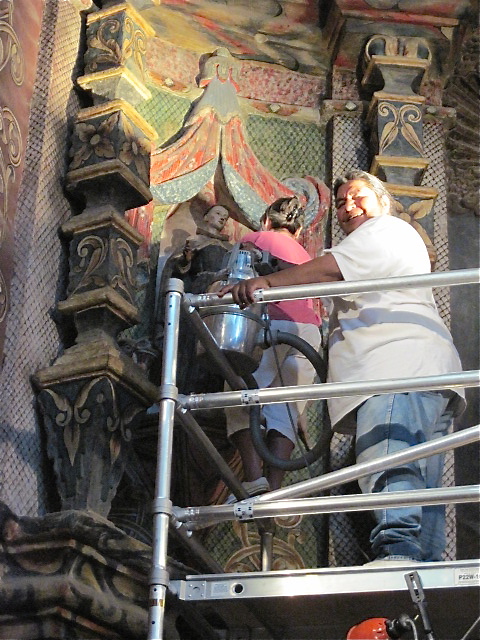
Matilde Rubio and Tim Lewis in East Transept
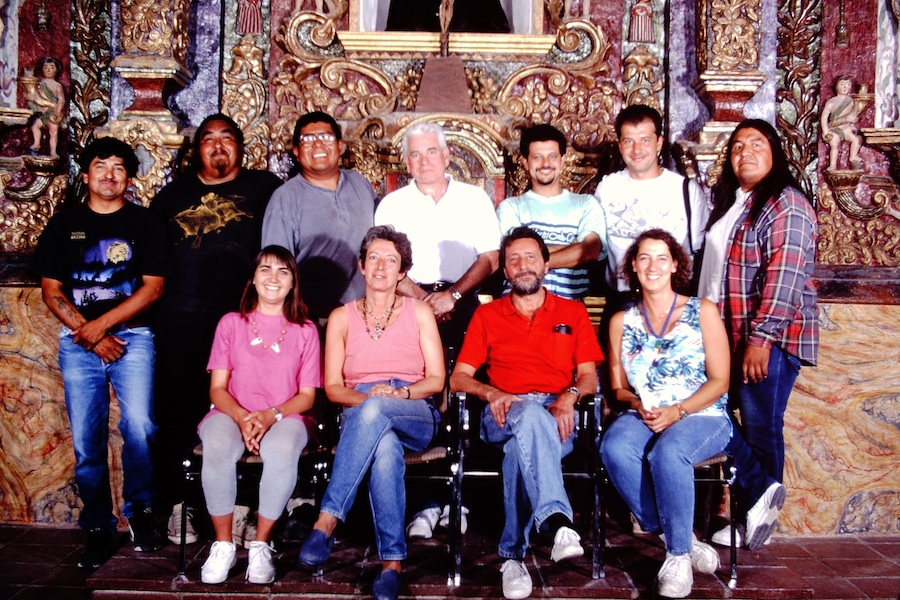
The original conservator team brought in from Europe: (Patronato’s current conservator team, Matilde Rubio at front row (left) and Tim Lewis back row (far right) © 1996 Helga Teiwes
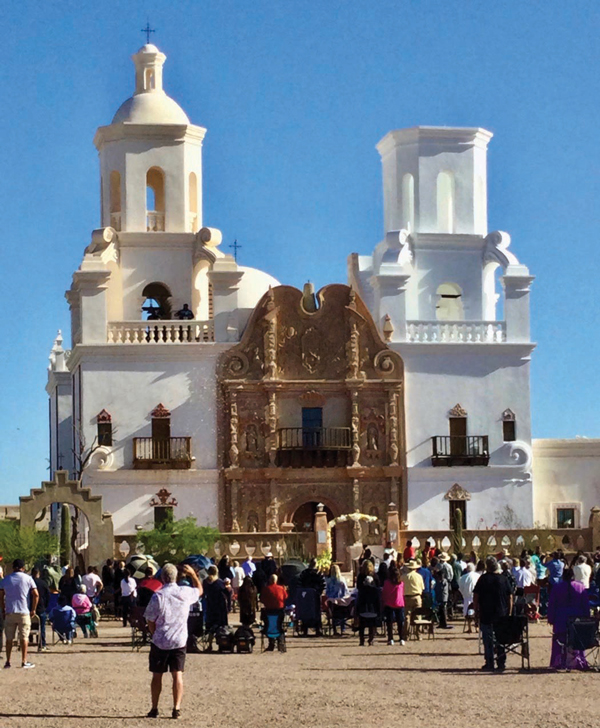
East Tower Completed 2022
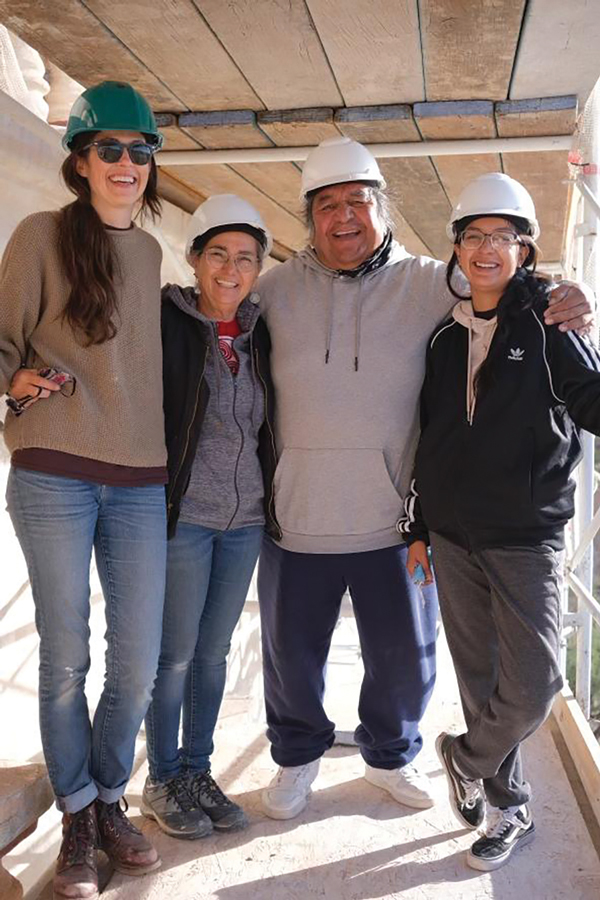
Starr Herr-Carrillo, Patronato’s Conservation Project Manager, Art Conservators, Matilde Rubio and Tim Lewis joined by Patronato’s Conservation Intern, Susie Moreno.
